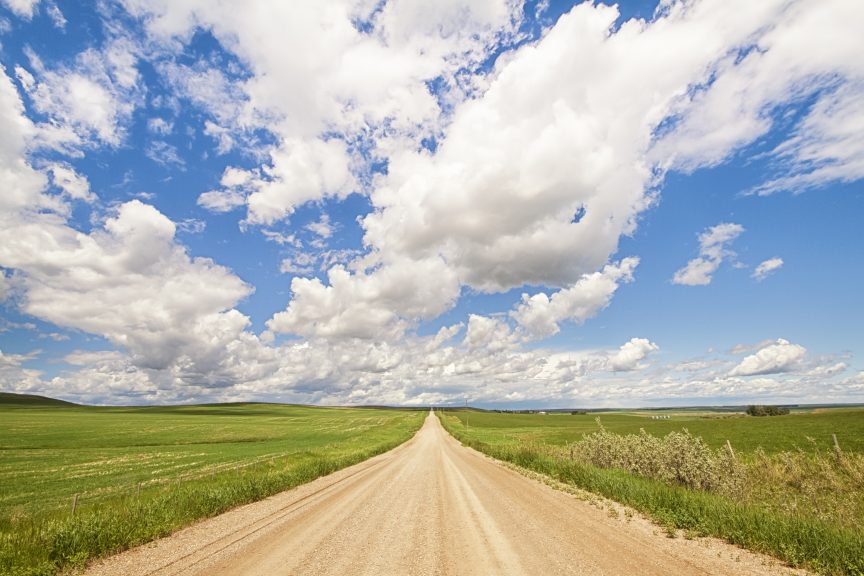Traditionally, grading dirt roads has called for motor graders and around-the-clock maintenance. Innovative, alternative methods — like those built by Midwest — make dirt roads stronger from the very start.
Unpaved dirt roads provide municipalities and businesses alike with cost-effective and reliable infrastructure. From industrial work on and around worksites to recreational activities in the community, unpaved dirt roads function in a wide range of important ways. However, while dirt roads may be more affordable than their paved counterparts, they present unique maintenance concerns that stakeholders must deeply consider.
For example, dirt roads are prone to deterioration over time that negatively impacts their overall shape and usability. Also thanks to a combination of inclement weather and heavy traffic wearing down their structure, unpaved roads can develop potholes, ruts, and washboarding in the short and long term.
To keep dirt roads in an ideal condition for private and public use, stakeholders need to understand how to grade a dirt road. According to the Gravel Roads Construction and Maintenance Guide from the Federal Highway Administration (FHWA), proper grading should result in unpaved roads that have a crowned surface, shoulder areas that slope downward from the road’s center, and ditches on either side. Maintained properly, this shape can drain moisture from dirt roads and better protect their overall usability.
The Ins and Outs of Grading Dirt Roads
The FHWA’s guide explains that the aim of grading is to create and preserve “road geometry” — that is, the required shape for dirt roads to function properly. While motor graders are the most common machinery used for grading dirt roads, front- or rear-mounted grading attachments to tractors and rakes are also an option.
When this machinery is in use, professionals should keep to an operating speed of 3-5 miles per hour, if not less, and set the moldboard angle between 30 and 45 degrees so as to recover loose aggregate. By going slow and keeping a proper pitch and angle for the moldboard, operators can ensure the quality of the dirt road grading and redistribute material displaced by vehicles across the entire surface of the road.
As stakeholders consider how to grade a dirt road, they should be careful not to add too much of a crown to the surface. For drivers, this can make it feel like they’re drifting off to the side shoulder and create unsafe driving conditions — especially in inclement weather. These kinds of conditions also necessitate major regrading and reshaping, contributing to rutting, loss of crown, and ditches that are too deep.
How Midwest Gets Dirt Road Grading Right
Motor graders can be an effective solution, but there’s no denying that they’re also a costly one. This can be a challenge for communities and businesses that have initially invested in unpaved dirt roads to cut overall maintenance costs. To properly maintain the grade of dirt roads without breaking municipal or corporate budgets, key decision-makers should consider how a customized soil stabilization and natural paving solution from Midwest Industrial Supply, Inc. can help get the job done.
Our Soil-Sement® Engineered Formula utilizes eco-friendly, non-toxic binders to add pavement-like strength to the surface of any dirt road. The soil stabilization experts at Midwest have also built our products to strengthen the structural integrity of unpaved roadbeds while taking advantage of materials already onsite, such as native roadbed soils, old dirt roads, and recycled surface material to create solutions that are uniquely suited to each project.
With the help of Midwest’s patented line of soil stabilization and natural paving products, it’s possible to build stronger dirt roads that can withstand the wear-and-tear of inclement weather and heavy traffic without needing constant regrading. If you’re interested in learning more about our cost-effective soil stabilization solutions, reach out to the award-winning team at Midwest today.

